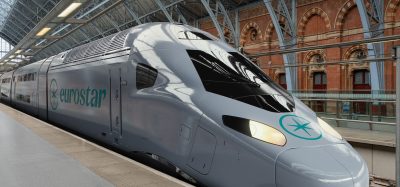United Kingdom joins the high-speed club
Posted: 26 November 2007 | | No comments yet
High Speed 1 (HS1), the UK’s first high speed railway, opened for business on 14 November 2007. Dave Pointon, Managing Director of project client Union Railways, looks back at key aspects of the 14-year planning and construction effort.
High Speed 1 (HS1), the UK’s first high speed railway, opened for business on 14 November 2007. Dave Pointon, Managing Director of project client Union Railways, looks back at key aspects of the 14-year planning and construction effort.
High Speed 1 (HS1), the UK’s first high speed railway, opened for business on 14 November 2007. Dave Pointon, Managing Director of project client Union Railways, looks back at key aspects of the 14-year planning and construction effort.
Planning for HS1 started in the mid-1980s following confirmation by the UK and France that a Channel Tunnel would be built. Initially routed through and beneath south-east London to a sub-surface station to be built between King’s Cross and St Pancras, the western section of the line was dramatically shifted by the Government in 1991 to follow an Arup-devised alignment through ‘brownfield’ regeneration areas in north Kent and east London, with a Thames crossing near Dartford. An option of bringing the line into the existing, under-used terminus at St Pancras rather than a new subsurface station was confirmed by the Government in 1993, and a Parliamentary Bill seeking authority for the project was deposited in November 1994.
In parallel with the two-year Parliamentary process, the Government promoted a competition to find a private sector developer, confirming London & Continental Railways (LCR) as the winner in early 1996. LCR’s founder-shareholders were Bechtel, Arup, Halcrow, Systra, Virgin, National Express, London Electricity and SG Warburg. In June 1996, LCR took over Union Railways, the HS1 project team, and Eurostar UK, the UK element of the Anglo/French/Belgian Eurostar train operator, plus interests in development land around St Pancras and Stratford in east London.
LCR’s plan was to raise funds for the new railway by floating the company on the back of an expanding Eurostar business. However, by late 1997, it was clear that Eurostar’s business volumes were treading seriously below forecast and LCR was forced to abandon its planned flotation and seek additional public sector funding to build the link. This was refused by the Government, which instead brokered a rescue deal involving the-then Railtrack. Construction was split into two sections, and Railtrack contracted to buy the first section on completion, at cost. Railtrack took operational control of Union Railways (South), the client company for Section 1, and assumed construction risk. Railtrack also took an option to acquire Section 2 on the same basis.
Construction of Section 1 began in October 1998; only six months later than LCR’s original programme, and was completed in 2003. In 2001, the decision to proceed with Section 2 was confirmed without Railtrack exercising its option to underwrite and acquire it, and construction of Section 2 began in July. Following the placing of Railtrack into railway administration, LCR bought back Railtrack’s interests in Section 1 in 2002, thus restoring the entire project to LCR’s control.
Design and the environment
Given that the new railway was to pass through the county of Kent – the ‘Garden of England’ – and beneath a densely-populated part of London, environmental considerations played a major part in the design and in the construction methodology. A so-called Reference Design was developed for Parliament’s consideration, comprising the defined horizontal and vertical alignment and the indicative position of structures such as bridges, viaducts, electrical feeder stations etc, and the indicative layout and nature of environmental mitigation measures – principally landscaping and noise barriers on the surface. The Reference Design was used as the basis of the UK’s biggest-ever Environmental Impact Assessment (EIA), the results of which were published to coincide with the deposit in Parliament of the CTRL Bill in 1994.
The Government was keen that the private sector developer should bring innovative engineering thinking to the project and to facilitate this, a concept known as NEWT – “Not Environmentally Worse Than” was devised. This stated that the overall effect on the environment of any change to the design or to the construction methodology must not be materially worse, over the part of the route where the effect of the change would be felt, than the effect as assessed and reported in the EIA. Thus NEWT set a baseline against which the effects of changes could be assessed by the local planning authority concerned and also ensured that environmental considerations were an integral part of the detailed design process from the outset. An indicator of this is that there has never been an accurate answer to the frequently-asked question “how much did the environmental mitigation cost?”, because the mitigation was designed-in from the outset and was therefore part of the base cost.
Other notable parts of the environmental regime included:
- A Code of Construction Practice (CoCP), and Planning, Heritage and Environmental Memoranda, all agreed with the relevant planning authorities or statutory consent-granting bodies (such as English Heritage and the-then English Nature) and setting out the obligations on all the parties concerned and the processes by which they would be discharged.
- Compliance with more than six hundred Undertakings and Assurances given to affected parties as a result of representations made by those parties to the Parliamentary Select Committees which undertook detailed scrutiny of the project.
NEWT, the CoCP and Memoranda, and the Undertakings and Assurances were together termed the Environmental Minimum Requirements, compliance with which by LCR was a requirement of its development agreement with the Government.
Another noteworthy environmental innovation was the creation of two Countryside Management Schemes (CMS) – one covering the entire route, the other an area of particular environmental sensitivity in north Kent. The CMSs were instituted as compensation for the fact that the new railway would have a general impact on the environment which could not be fully mitigated in the detail design, and provided funding for environmental improvements within the corridor of the railway but not related to it. The route-wide CMS, known as the Rail Link Countryside Initiative, was launched with an endowment of £2 million from Union Railways, and over its eight years of existence has awarded more than £1.5 million in grants to support more than two hundred projects from the public, private and voluntary sectors with a total value of more than £6 million.
The north Kent scheme – Cobham-Ashenbank Management Scheme or CAMS – covered an area of ancient woodland and historic parkland between the river Medway and Cobham, and was supported by Union Railways to the tune of £750,000 over five years. CAMS funding has been used directly for projects in the designated area and also as ‘seed corn’ – successfully supporting applications to other funding sources for larger scale projects.
Procurement and construction
HS1 saw the first large-scale adoption of the New Civil Engineering contract, which uses agreed target pricing with pain/gain sharing, based on partnership between client and contractor.
Construction of HS1 effectively fell into three phases: civil engineering of the alignment ‘trace’; installation and commissioning of railway equipment on the trace; and, on Section 2, building works for the stations and depots.
The civil engineering of the route alignment was divided into geographical packages, fifteen in all across both Sections, with most contracts going to joint ventures drawn from the major European contractors. In construction terms, much of Section 1 was a straightforward surface alignment involving earthworks and bridges with associated road diversions, but there were also more demanding challenges – a 3km twin-track tunnel deep beneath the North Downs at Blue Bell Hill, a 1.25km push-launched viaduct across the River Medway between Strood and Borstal and a 4km length of cut and cover tunnel and viaduct which threads the line through the centre of Ashford, and required the shifting of roads, railways and utilities to do so.
On Section 2 the emphasis was on tunnelling – 2.5km of twin 8.15m-diameter bores beneath the Thames in poor ground, and another 18km beneath east London, either side of a 1km sunken ‘box’ at Stratford which contains Stratford International station. But there were also challenges on the surface at Thurrock, where a 1km viaduct was push-launched through the M25 Dartford Thames river crossing, passing beneath the Queen Elizabeth II bridge carrying southbound traffic and above the exits from the tunnels carrying northbound traffic. West of Thurrock, the soft ground of the Inner Thames Marshes required the installation of some 14,000 piles to support the track over 7km. Sliding bridges was something of a theme on Section 2: on the approaches to St Pancras, three bridges were moved into position over existing railways during Christmas shut-downs in 2002 and 2003, while at Ebbsfleet, removal of part of the embankment carrying the existing North Kent line over HS1 and its replacement with a slide-in 9,000 tonne bridge was achieved in a three day possession in Spring 2003.
Also on Section 2, we faced the enormous task of extending and renovating St Pancras station whilst respecting its Grade 1 heritage status and keeping its domestic incumbent, train operator Midland Mainline, in business throughout. Our work at St Pancras was described in some detail in my earlier article (Global Railway Review, Issue 3 2006), as was the railway-equipment or ‘systemwide’ phases of the project. The systemwide contracts were functional rather than geographic, and extended the whole length of Section 1 or Section 2. The philosophy adopted was that HS1 should be regarded as a continuation of the expanding mainland European high speed network rather than a UK ‘one-off’, and that tried and tested high speed railway technology should be used rather than ‘reinventing the wheel’ from a UK perspective. The design of track, overhead power lines and signalling drew heavily on French practice, as did the tracklaying methodology.
On the brink
Section 2 went ‘live’ early in 2007, with commissioning taking place progressively thereafter and culminating in the hand-over of the new railway to Union Railways in July. Subsequently Eurostar moved in to its new maintenance depot near Stratford and started to train its British, French and Belgian drivers over the new route. On 3 September, the first passenger-carrying Eurostar arrived at St Pancras 2h 3m 39s after leaving Gare du Nord in Paris – a record that is unlikely to be beaten (the fastest service trains will take 2h 15m). In late October, Eurostar carried out dry-run tests of the systems and procedures at St Pancras, using volunteer ‘guinea-pig’ passengers, while the inevitable last bits of station fit-out work went on around them. On 14 November, the UK finally joined the high-speed club.
OUT NOW: The Definitive Guide to Rail’s Digital Future
The rail industry is undergoing a digital revolution, and you need to be ready. We have released our latest market report, “Track Insight: Digitalisation.”
This is not just another report; it’s your comprehensive guide to understanding and leveraging the profound technological shifts reshaping our industry. We move beyond the buzzwords to show you the tangible realities of AI, IoT, and advanced data analytics in rail.
Discover how to:
- Optimise operations and maintenance with real-time insights.
- Enhance passenger services through seamless, high-speed connectivity.
- Leverage technologies like LEO satellites to improve safety and efficiency.
Featuring expert analysis from leaders at Nomad Digital, Lucchini RS, Bentley Systems and more, this is a must-read for any rail professional.







